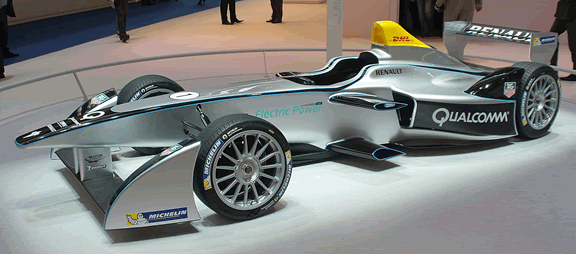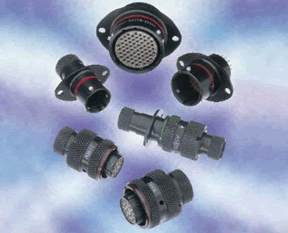Electric Car Racing Puts Connectors in the Spotlight
The FIA Formula E Series has attracted connector companies as sponsors and highlights the role of electronics in the future of auto racing.

Along with the rest of the car industry, motorsport has taken a turn for the green and the high tech. The FIA Formula E Series is the first to feature exclusively electric cars, but even the FIA’s other racing series, most notably the massively popular Formula One, are adopting highly sophisticated electronic elements that are substantially changing auto racing for teams as well as fans. Drive-by-wire has replaced cable linkages with electronics, and internal combustion engines are becoming only one piece of the power system. Formula E is experimenting with concepts that may one day become part of the mainstream for auto racing, as electronics and electric vehicles move from novelty to standard.
The FIA’s Test Ground
The Formula E series was created in 2012, with the first races taking place in the 2014 – 2015 season. Formula E includes 10 teams, each with identical cars and the same power capabilities for each of 10 races, and all but one of the races are staged on circuits set up on the streets of cities like Beijing, Berlin, and Mexico City. The car, dubbed the Spark-Renault SRT_01E, is the result of a joint collaboration between McLaren Electronic Systems, Williams Advanced Engineering, Dallara, and Renault.
The car’s motor, provided by McLaren, produces the equivalent of 268bhp, limited to 228bhp in “race mode.” In an interesting twist on fan participation, the public can vote on its favorite car prior to and in the first six minutes of each race; the most popular car gets an additional 40bhp, or 30kw, “fanboost.” In addition to its current driver-piloted incarnation, Formula E plans to introduce a driverless car race in the 2016 – 2017 season. The winner will be determined by which team can write the best algorithm for the car’s self-drive system.
Features like “fanboost” and the driverless car race mark Formula E as the test ground for new ideas in motorsport, apart from the decades of tradition surrounding racing series like Formula One. While Formula E may be set apart from the mainstream at the moment, recent changes in the technology and standards in Formula One may indicate the convergence of the somewhat experimental electric and driverless car races and the mainstream sometime in the future.
Formula One cars now include an incredibly sophisticated array of electronics that make possible systems like the Energy Recovery System (ERS), which harvests heat energy from exhaust and brakes that would normally go to waste. In 2014, Formula One introduced a brake-by-wire system to give drivers better control over braking on cars equipped with ERS. While the internal combustion engine is still at the heart of an F1 car, it is increasingly just one part of a very sophisticated power unit incorporating a lot of electronics that require a lot of connectors for an increasingly diverse array of applications.
Borrowing Connectors from Aviation and the Military
As motorsport experimented with lightness and durability in every component, racing teams’ connector requirements soon diverged from the connector standards for consumer automobiles. While connectors, harnesses, and cable assemblies in consumer cars may need to last a decade or more, they are also subject to the cost economics of mass-producing a consumer product and can be covered by warranties. In motorsport, cost is of much less concern, warranties can’t correct for poor race performance, and while motorsport connectors must be durable, they need only last as long as the race – whether it’s a drag race lasting only a few seconds, the 24 hours of Le Mans, or the weeks-long Dakar Rally.

Deutsch Autosport AS Series circular connectors for motorsport are adapted directly from a military design.
Highly specialized approaches have been adopted by racing teams to suit these different environments, but throughout motorsport today connector design draws more from military and aviation standards than from the consumer automotive connector industry. Military-derived circular connectors are the standard, as seen in components like TE Connectivity’s DEUTSCH Autosport AS Series connectors, which were adapted directly from military components to meet motorsport’s needs for smaller size and lower weight. Connector size, weight, and application are becoming an even greater concern as electronics creep into every part of cars in motorsport. As the Formula E Spark-Renault attests, in electric vehicles and vehicles with integral electronic systems, connectors and connector performance are more fundamental to vehicle operation than ever.
Connector Companies Become Sponsors
The increasing reliance on electronics marked by the electric cars in motorsport and the Formula E series makes partnership between connector companies and racing teams a more logical arrangement than ever. While TE Connectivity has sponsored the Andretti Formula E team, its components are used throughout auto racing, as they have been for years. According to Amy Shah of TE, the manufacturer’s connectivity and sensor solutions powered every Formula E car in the inaugural season.
And so they shall continue as motorsport becomes increasingly infused with high-tech electronics.
Neil Shurtz is a contributor to Connector+Cable Assembly Supplier based in San Francisco. As a freelancer and in his work in public relations for high-tech companies, he has written about technology in the oil and gas, aerospace, and manufacturing industries. Shurtz specializes in framing complex and niche technical topics in a broader social context.
In-depth research reports from Bishop & Associates covering the automotive connector market include:
World Automotive Connector Market




